During the spring and summer months in Arizona, when warblers and tanagers arrive, it is common to see yellow birds, particularly yellow-rumped warblers and lesser goldfinches. However, in the winter, these are the only yellow birds that are commonly spotted in the region.
If you have spotted a yellow bird in Arizona and want to identify it, this guide will be helpful. It provides pictures, identification information, song recordings, and details about their migration patterns.
The majority of yellow birds in Arizona belong to the warbler, oriole, or tanager families. Sometimes, female birds of these species can look quite different from the males.
To make the process of identifying yellow birds easier, this guide presents the information in the order of their common sightings in Arizona during spring and summer (May and June), according to ebird checklists.
In Arizona, you can find the following yellow birds throughout the year: lesser goldfinch, yellow-headed blackbird, and eastern meadowlark. During the summer, additional yellow birds include yellow warbler, common yellowthroat, western kingbird, western tanager, summer tanager, hooded oriole, Scott’s oriole, and tropical kingbird. In the winter, you can spot yellow-rumped warbler, orange-crowned warbler, western meadowlark, cedar waxwing, and American goldfinch. During migration, watch out for Wilson’s warbler, Nashville warbler, evening grosbeak, and American redstart. Additionally, there are accidental yellow bird sightings in Arizona, such as painted bunting, dickcissel, palm warbler, Baltimore oriole, hooded warbler, yellow-throated warbler, prothonotary warbler, yellow-throated vireo, magnolia warbler, black-throated green warbler, white-eyed vireo, pine warbler, prairie warbler, orchard oriole, Canada warbler, Couch’s kingbird, scarlet tanager, Cape May warbler, and blue-winged warbler.
So, if you want to identify those yellow birds you’ve spotted, keep reading for more details about each species.
There are a total of 39 yellow bird species in Arizona. Let’s start with the first one:
1. Lesser Goldfinch
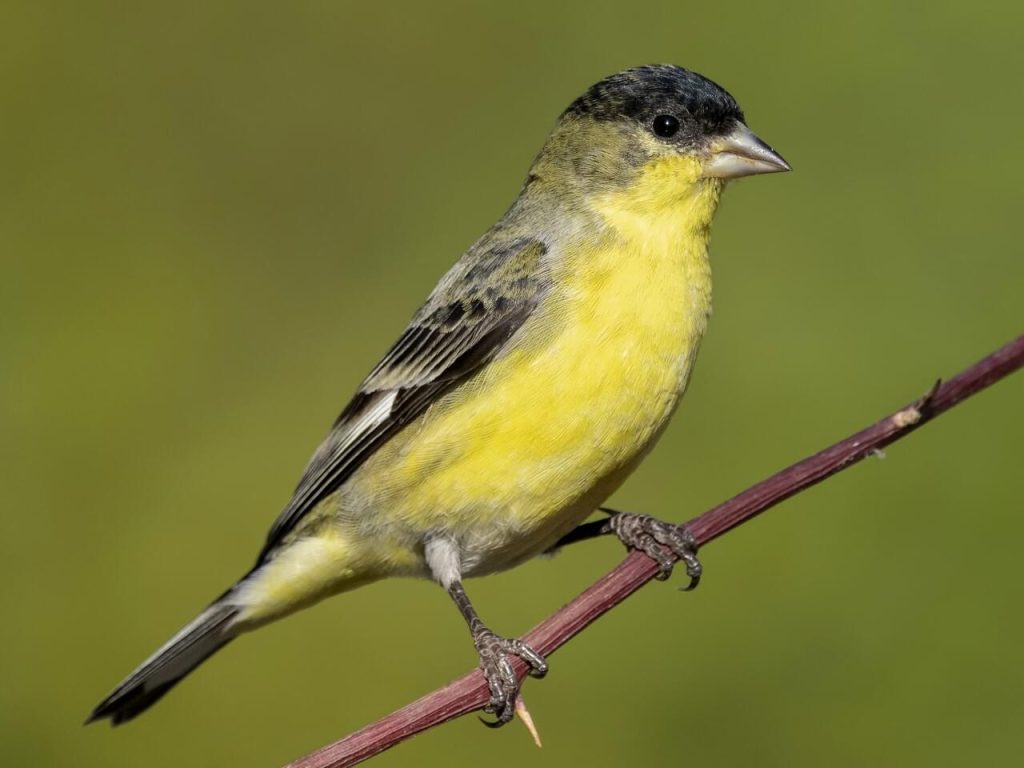
The lesser goldfinch is a small, bright yellow and black songbird with long pointed wings and a short notched tail. The females have olive backs and are less vibrant yellow underneath. They spend the breeding season in northern Arizona but can be found throughout the state all year. They are commonly seen in open habitats such as thickets, weedy fields, forest clearings, parks, and gardens. Lesser goldfinches feed on seeds, especially sunflower seeds, as well as fruits from elderberry, coffeeberry, and buds from cottonwoods, willows, sycamores, and alders. You can attract them to your yard by offering sunflower seeds and nyjer in tube or platform feeders.
Fun fact: Lesser goldfinches are known to chase away larger goldfinch species from feeders and nesting areas.
2. Yellow-rumped Warbler
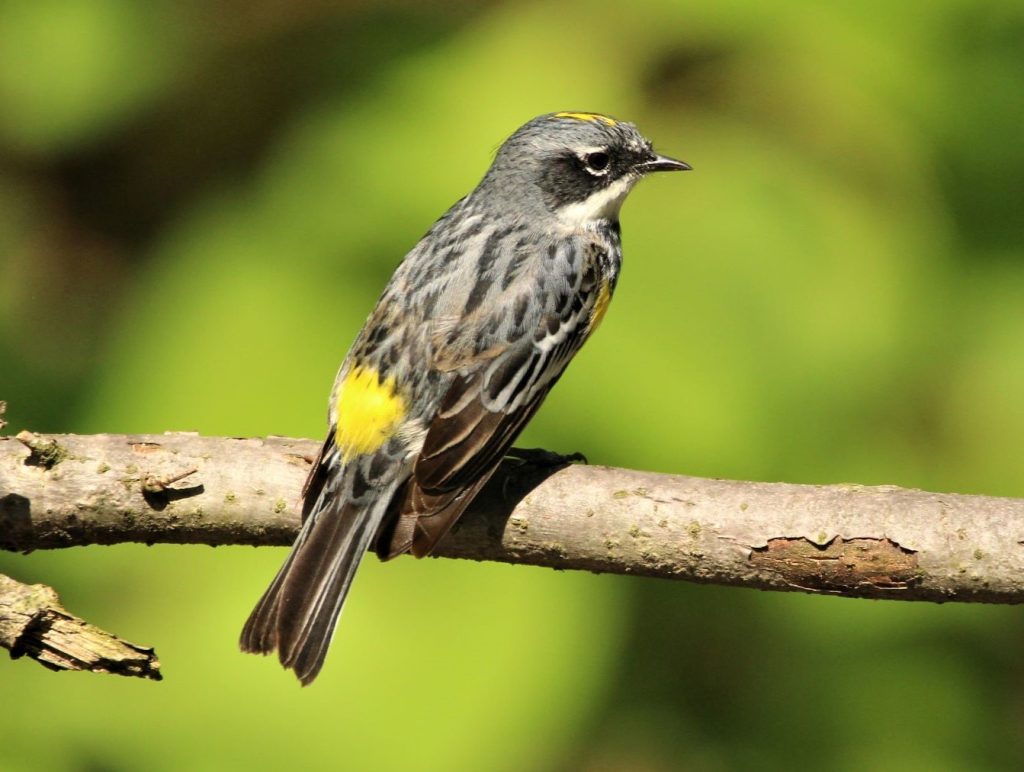
The yellow-rumped warbler is primarily seen in Arizona during the winter months, appearing in about 33% of checklists at that time. They are gray with flashes of yellow on the face, sides, and rump, and they have white wings. Females may have a slightly brownish color, and in the winter, their plumage becomes paler brown with bright yellow rumps and sides, which turn yellow and gray again in the spring. Yellow-rumped warblers breed in Canada and parts of the Rockies and Appalachian mountains. During migration, they can be seen in the Midwest before overwintering in southern and southwestern US states, the Pacific Coast, Mexico, and Central America. These warblers can be found in coniferous forests during the breeding season and in open areas with fruiting shrubs in the winter. They primarily feed on insects during the summer and switch to a diet of fruit, including bayberry and wax myrtle, during the winter.
Fun fact: Yellow-rumped warblers form large flocks numbering in the thousands during the winter months.
3. Yellow Warbler
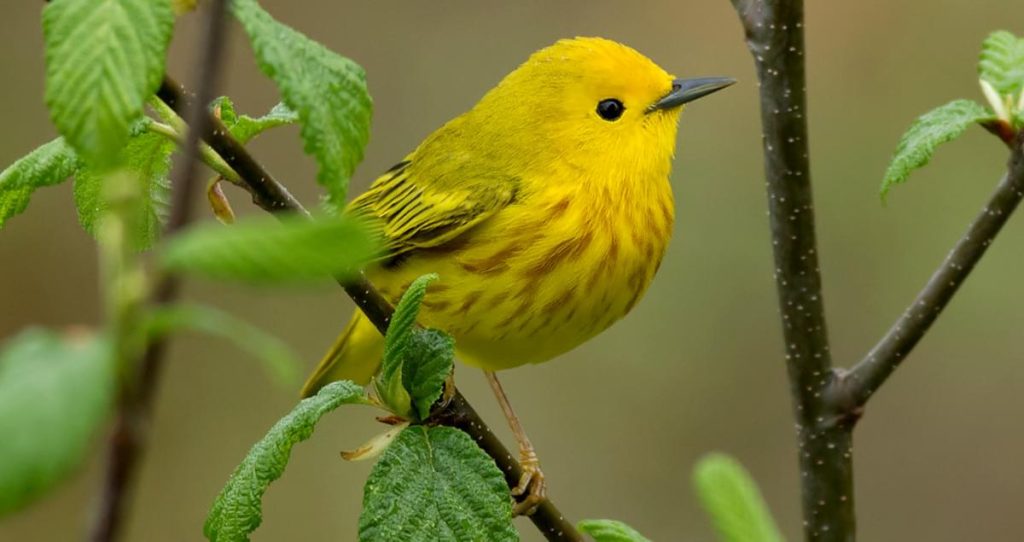
The yellow warbler is spotted in Arizona from March to October and appears in about 14% of summer checklists. These small, bright yellow birds have a yellow-green back, with males having chestnut streaks on their breasts. Females and juveniles are not as vibrant as the males. Yellow warblers migrate long distances to breed in Canada and the US (except southeastern states) before heading to Central and South America for the winter. During migration, they can be seen in southeastern US states. You can find yellow warblers along streams, wetlands, and the edges of fields, where they forage for insects such as caterpillars, midges, beetles, bugs, and wasps.
Fun fact: Yellow warblers are known for their ability to build multiple nests. If a cowbird lays its eggs in their nest, they build a new nest on top of it and start over.
4. Orange-crowned Warbler
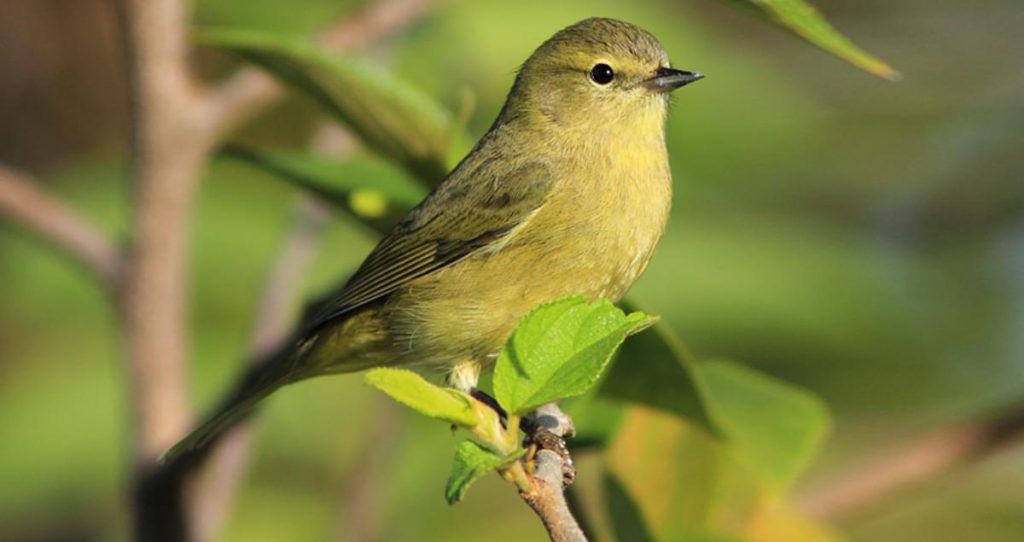
Orange-crowned warblers are often seen in Arizona during the winter months, appearing in about 9% of checklists at that time. They are not as brightly colored as other warblers, with a yellow-olive coloring that is more yellow on the Pacific Coast. Their orange crown is rarely visible. These warblers breed in Canada and western US states and migrate to the Pacific, East, and Gulf Coasts, as well as Mexico. During migration, they can be seen across all US states except the northeastern ones. Orange-crowned warblers can be found in shrubs, low vegetation, and open woodlands, where they mainly feed on spiders and insects such as caterpillars and flies. They also consume fruit, berries, and seeds and are known to visit backyard feeders.
Fun fact: Orange-crowned warblers often drink from the sapwells of sapsuckers and woodpeckers.
5. Common Yellowthroat
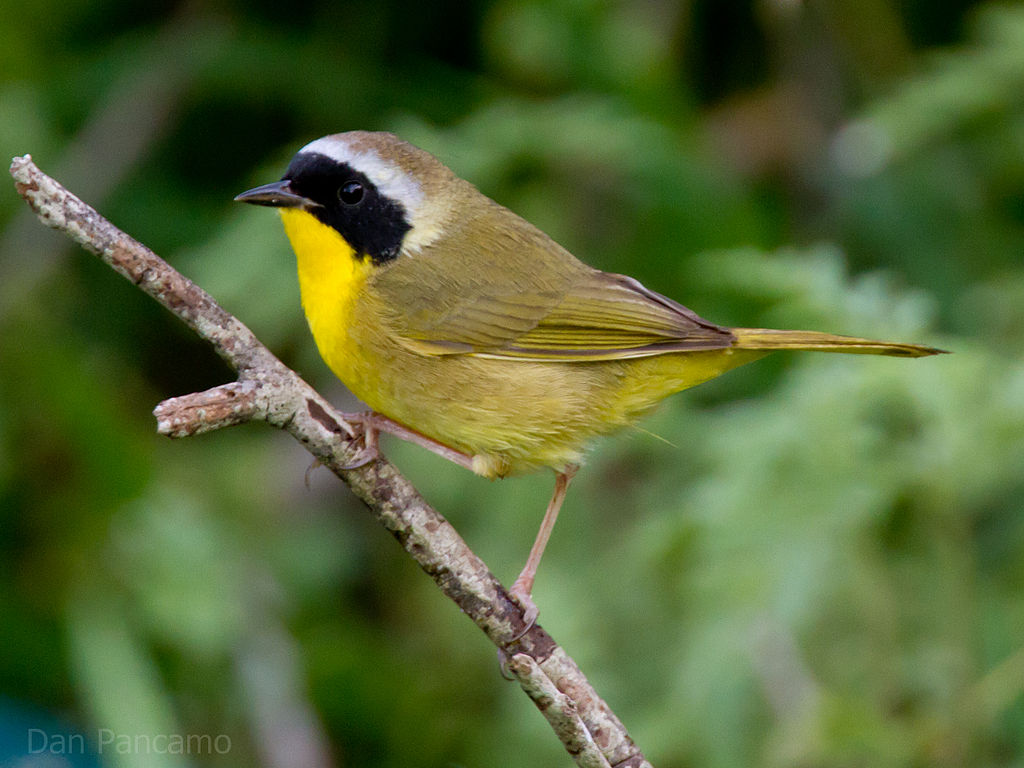
Common yellowthroats can be spotted all year in Arizona, but they are most commonly seen during the breeding season from April to October. They appear in about 9% of summer checklists and 3% of winter checklists. These small songbirds have brownish backs and bright yellow undersides, with males having black masks across their faces. The intensity of their yellow color may vary geographically, and females may have a more olive hue. Common yellowthroats breed over most of North America during the summer, except for Alaska and northern Canada. Some remain along the Gulf Coast and Pacific Southwest all year, while others migrate south for the winter. They are often found in marshy or wetland areas and brushy fields, living amidst thick, tangled vegetation.
Fun fact: Common yellowthroats use their black mask as a visual signal to communicate with other males during courtship.
6. Western Kingbird

Western kingbirds are present in Arizona during the breeding season, mainly from mid-March to October, appearing in about 12% of summer checklists. These large flycatchers have yellow bellies, whitish chests, gray heads, grayish-brown wings, and black tails with white edges. They breed in summer in western US states, the plains area, and Canada, and migrate to Mexico and Central America. Some individuals may overwinter in southern Florida. Western kingbirds can be found in open habitats and are often seen perched on fences and utility lines, waiting for insects to fly by before catching them in mid-flight.
Fun fact: Western kingbird parents continue to feed their young for about three weeks after they leave the nest.
7. Western Tanager

Western tanagers are seen in Arizona during the breeding season and are more frequently observed during migration in May, August, and September. They appear in about 15% of summer checklists and up to 25% of checklists during migration. Male western tanagers have a flaming orange-red head, yellow body, and black wings, while females have a red face and yellow-green body. They breed in western US states and western Canada and can be spotted during migration in the eastern and southern parts of their range. They spend their winter in Mexico and Central America. Western tanagers can be found in open conifer forests but often stay hidden in the canopy despite their bright coloring. Their diet primarily consists of insects, such as wasps and grasshoppers, during the summer, while they also eat fruit during the fall and winter.
Fun fact: The red coloring of western tanagers comes from consuming pigments produced by certain insects in their diet.
8. Wilson’s Warbler

Wilson’s warblers are mainly seen migrating across Arizona from March to May and again from August to October. They appear in up to 22% of checklists during migration. These tiny, round yellow warblers have a large black cap in males and a smaller black cap in females. They breed in Canada, Alaska, and northwestern US states and can be seen across all US states during migration. They spend their winter in Mexico and Central America. Wilson’s warblers are often found along streams in thickets and near forest edges, foraging for insects, larvae, and spiders.
Fun fact: Wilson’s warblers use a distraction technique of pretending to have a broken wing to lure predators away from their nests.
9. Summer Tanager (Female)
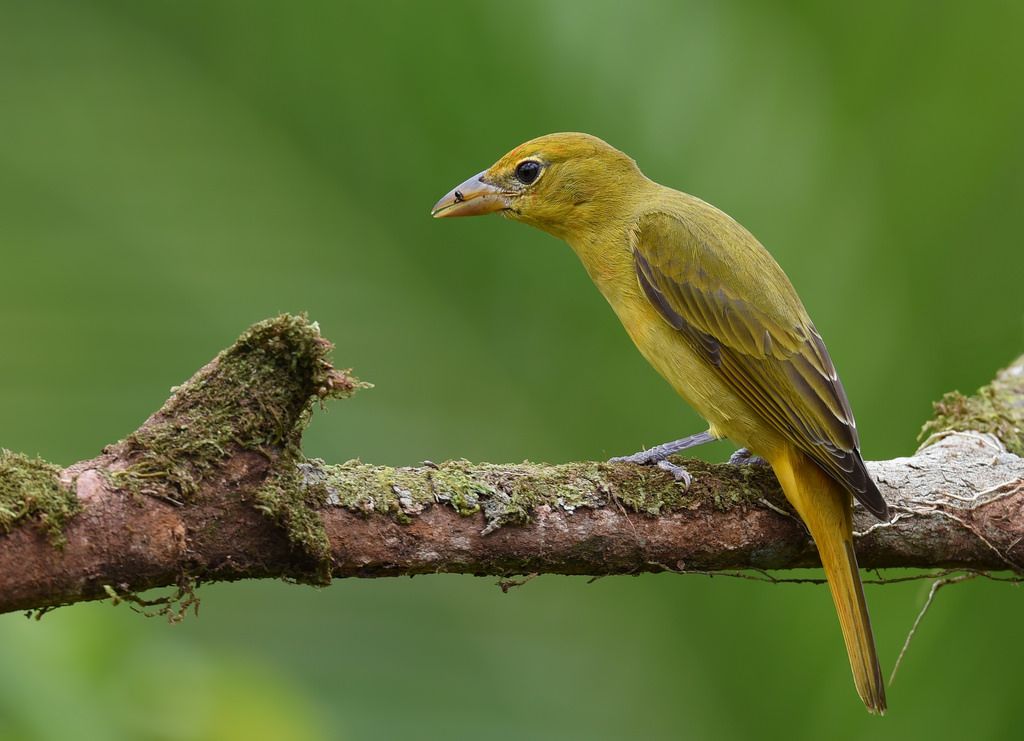
Summer tanagers are frequently seen in Arizona during the breeding season from April to October, appearing in about 11% of checklists. Male summer tanagers are bright red birds with chunky beaks, while females and juveniles are mainly yellow with hints of green on their backs. Summer tanagers breed in southern and eastern US states before migrating to Central and South America for the winter. They can be found in dry open areas, especially near palm trees. Summer tanagers feed on bees and wasps in mid-flight, catching them, beating them against a branch to remove the stinger, and then consuming them.
Fun fact: Young scarlet tanagers are fed by their parents for an additional three weeks after leaving the nest, as they are still developing their flight skills.
10. Hooded Oriole
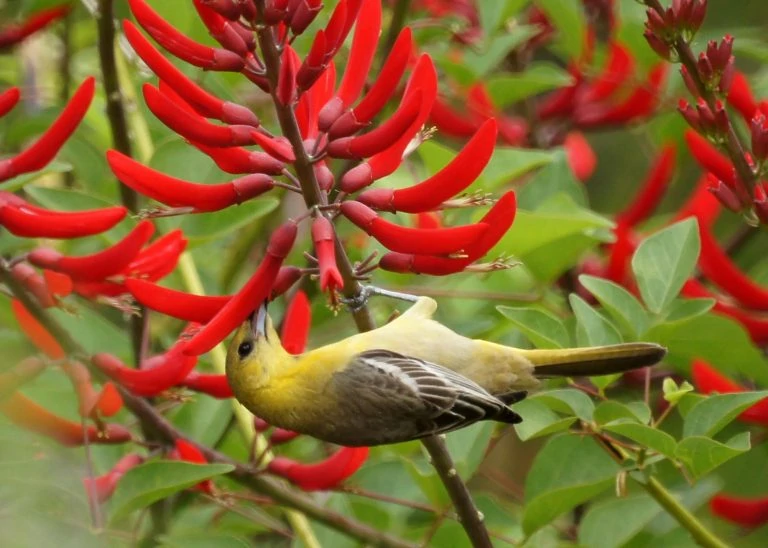
Hooded orioles spend the breeding season in Arizona and can be seen from March to October, primarily in the southern part of the state. They appear in about 8% of summer checklists. Male hooded orioles range in color from bright yellow to bright orange, with black throats and backs. Females and immature individuals are more yellow with grayish wings and lack the black face markings of males. Hooded orioles breed in the southern US states, constructing hanging nests on the undersides of palm fronds. They spend their winter in Mexico, with some individuals remaining on the Gulf Coast and in Central America all year. Hooded orioles live in dry open areas, especially near palm trees.
Fun fact: Hooded orioles in Texas tend to be orange in color, while those further west are yellow.
11. Scott’s Oriole
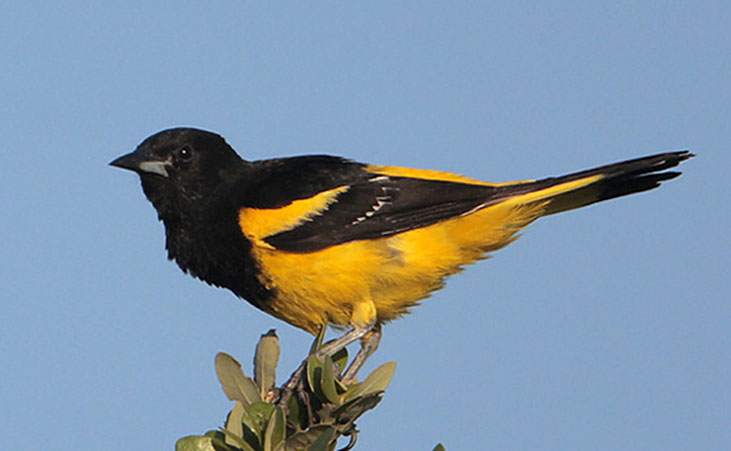
Scott’s orioles are primarily spotted in Arizona during the summer breeding season, from April to August. They appear in around 4% of summer checklists. Male Scott’s orioles have black hoods and backs with bright yellow underparts, while females have grayish-olive upperparts and yellow underparts. These orioles breed in the southwestern United States and northern Mexico. They prefer arid habitats with desert scrub and mesquite trees. Scott’s orioles feed on nectar, insects, and fruits.
12. Tropical Kingbird
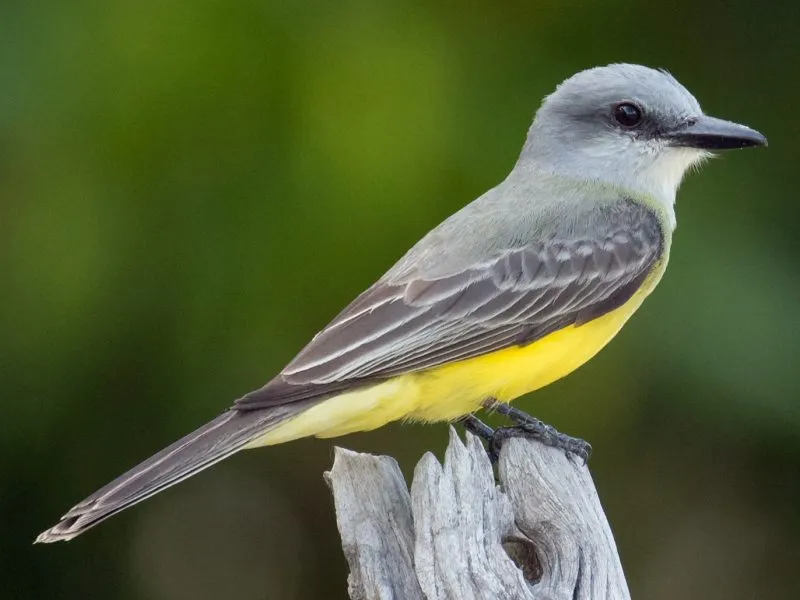
Tropical kingbirds can be observed in Arizona during the summer, from April to September. They appear in approximately 6% of summer checklists. These large flycatchers have yellow underparts, olive-brown upperparts, and a gray head. They breed in southern Arizona and southern Texas, and their range extends into Mexico, Central America, and South America. Tropical kingbirds are often found perched on exposed branches or wires, sallying out to catch flying insects.
13. Yellow-headed Blackbird
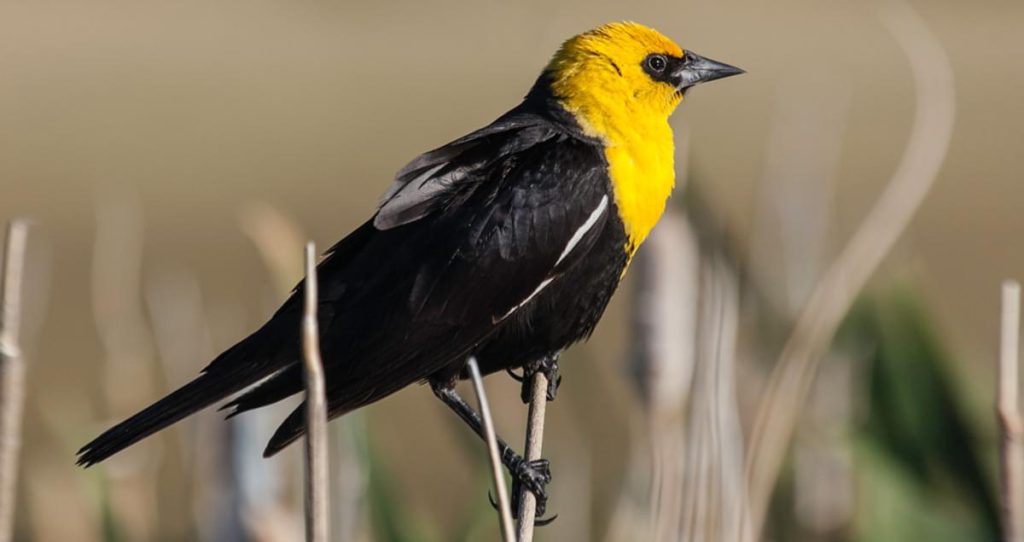
Yellow-headed blackbirds are present in Arizona all year round. They can be seen in marshes, wetlands, and fields with tall grasses. Male yellow-headed blackbirds have striking black bodies and bright yellow heads, while females are more subdued with brownish coloring. These blackbirds breed in marshes and wetlands throughout western and central North America. They feed on insects, seeds, and grains.
14. Eastern Meadowlark
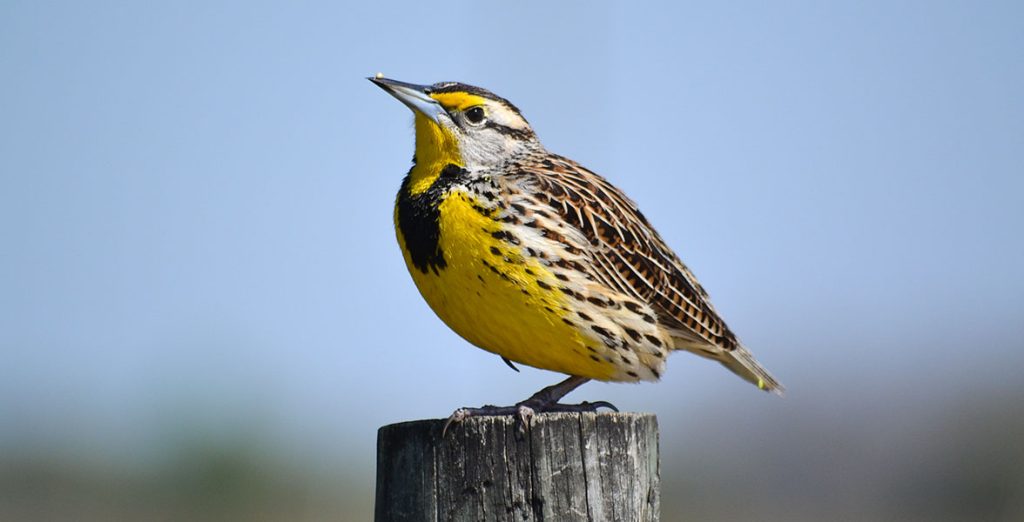
Eastern meadowlarks are seen in Arizona all year, though they are more commonly observed during the winter months. They appear in approximately 4% of winter checklists. These medium-sized birds have a bright yellow breast with a distinctive black V-shaped pattern. They breed in grasslands and meadows across eastern and central North America. Eastern meadowlarks forage on the ground, feeding on insects and seeds.
15. Cedar Waxwing
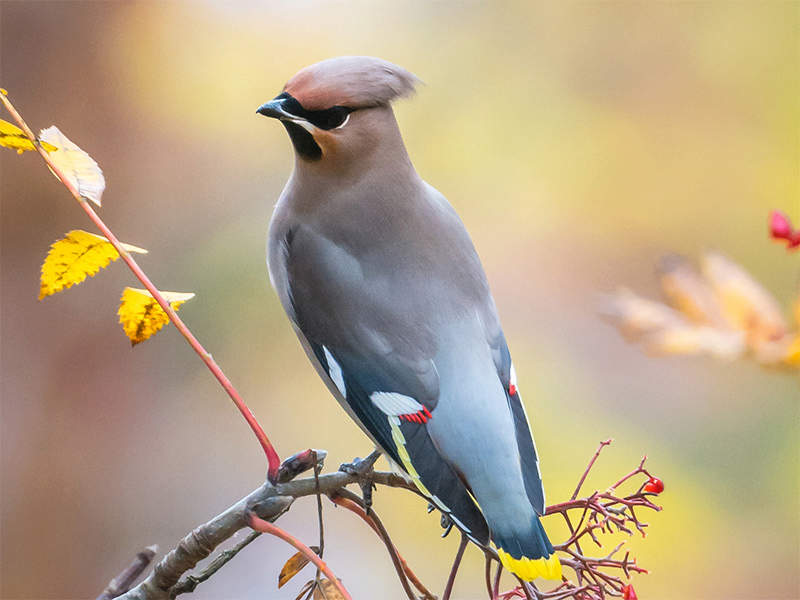
Cedar waxwings can be spotted in Arizona during the winter months, from October to April. They appear in around 3% of winter checklists. These sleek birds have a pale yellow belly, gray-brown wings, and a black mask edged in white. Cedar waxwings breed in northern North America and spend their winters in the southern United States and Mexico. They are often found in flocks and feed on fruit, particularly berries.
16. American Goldfinch

American goldfinches are present in Arizona all year round. They have a bright yellow body with black wings and a black cap. These small finches breed across North America and can be seen in various habitats, including fields, meadows, and gardens. American goldfinches primarily feed on seeds, especially those from plants in the sunflower family.
17. Wilson’s Warbler
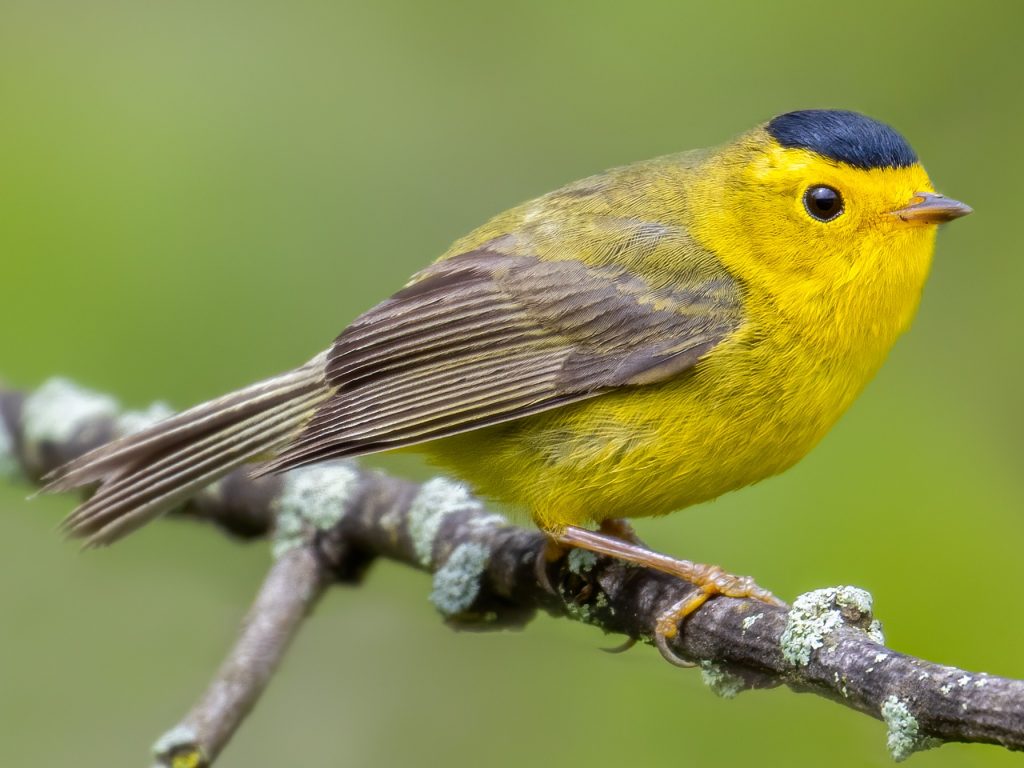
Wilson’s warblers are mainly spotted migrating across Arizona from March to May and again from August to October. They occur in up to 22% of checklists during migration. These small, round yellow warblers have a large black cap in males and a smaller black cap in females. They breed in Canada, Alaska, and northwestern US states and can be seen across all US states during migration. They spend their winters in Mexico and Central America. Wilson’s warblers are often found along streams in thickets and near forest edges, foraging for insects, larvae, and spiders.
18. Nashville Warbler
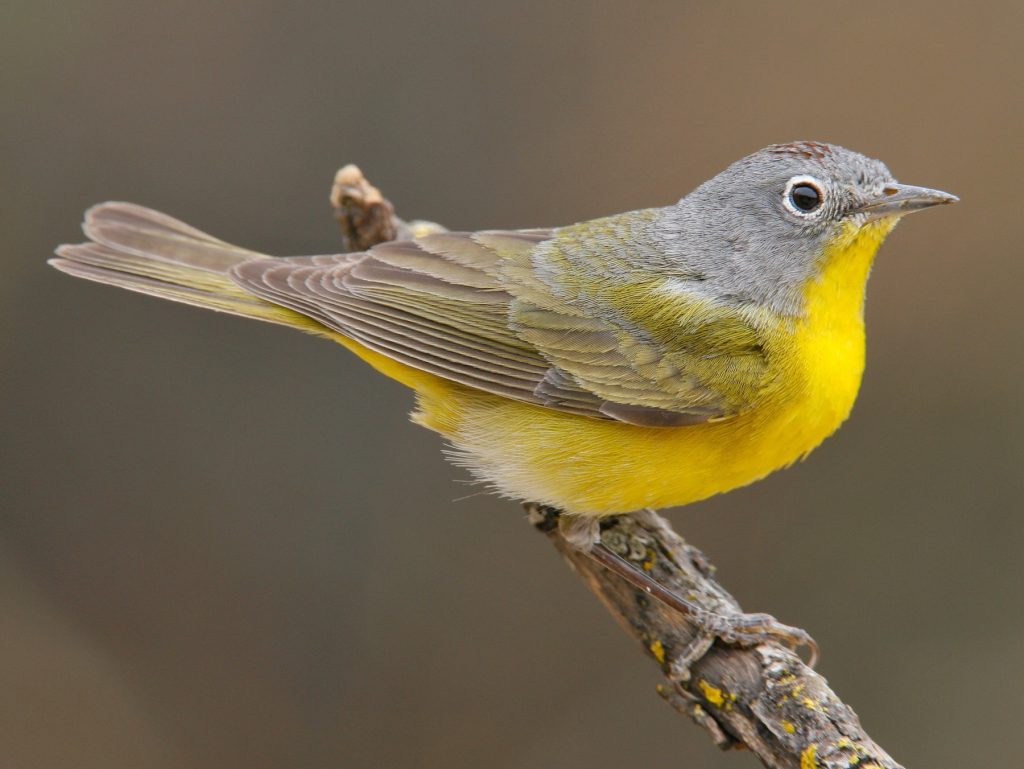
Nashville warblers can be seen migrating through Arizona from late April to early May and again from late August to September. They appear in around 6% of checklists during migration. These small songbirds have olive-green upperparts, bright yellow underparts, and a gray hood. Nashville warblers breed in Canada and the northern
United States before migrating to Mexico, Central America, and the Caribbean for winter. They can be found in various habitats, including forests, woodlands, and shrubby areas.
19. Evening Grosbeak
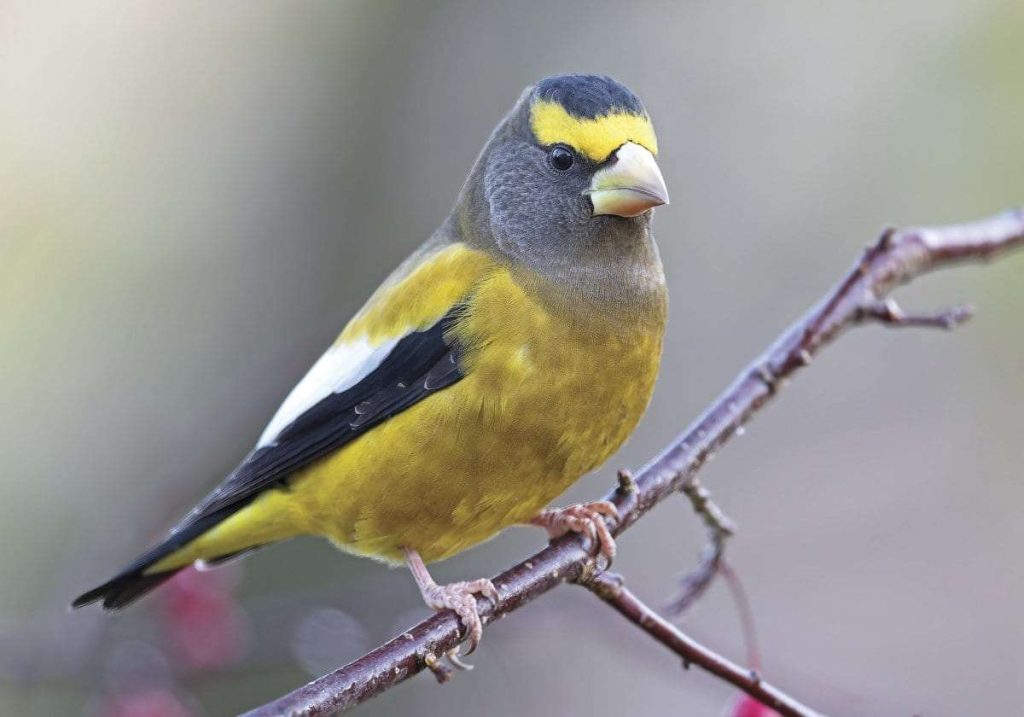
Evening grosbeaks are occasionally spotted during migration in Arizona, particularly in October and November. They occur in about 3% of checklists during migration. These stocky, large-billed finches have a yellow body with black and white wings and a distinctive yellow, black, and white pattern on their head. Evening grosbeaks breed in the coniferous forests of western North America. They feed on seeds, fruits, and insects.
20. American Redstart
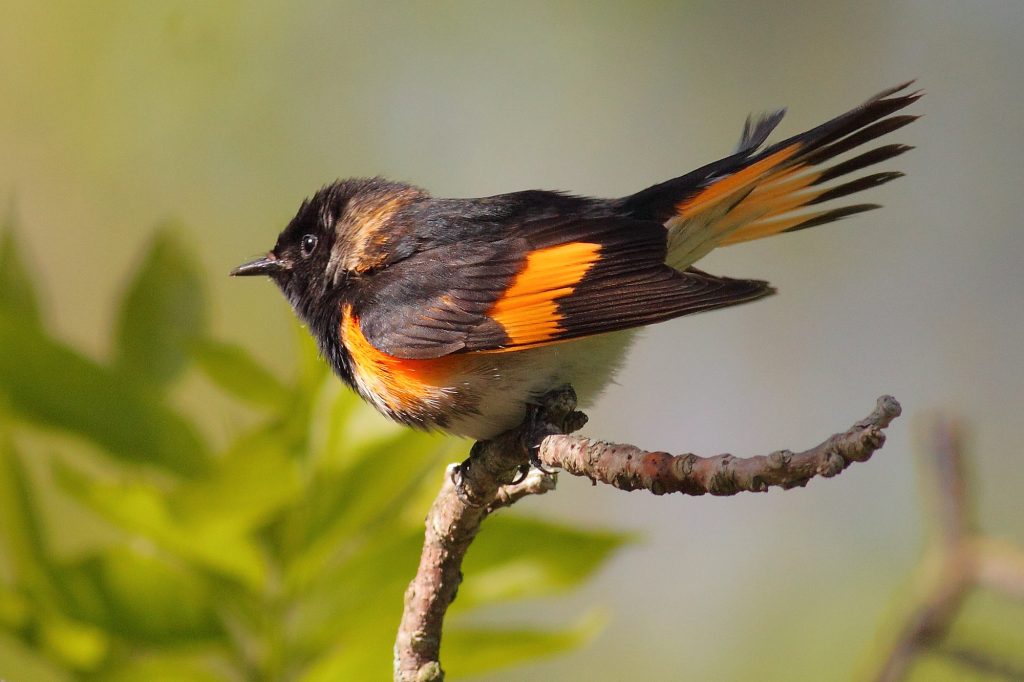
American redstarts are seen migrating through Arizona from late April to early May and again from late August to September. They appear in up to 5% of checklists during migration. These small warblers have black upperparts with bright orange patches on their wings, tail, and sides, while their underparts are white or pale yellow. American redstarts breed in Canada and the northeastern United States before migrating to Mexico, Central America, and the Caribbean for winter. They can be found in various wooded habitats.
21. Painted Bunting
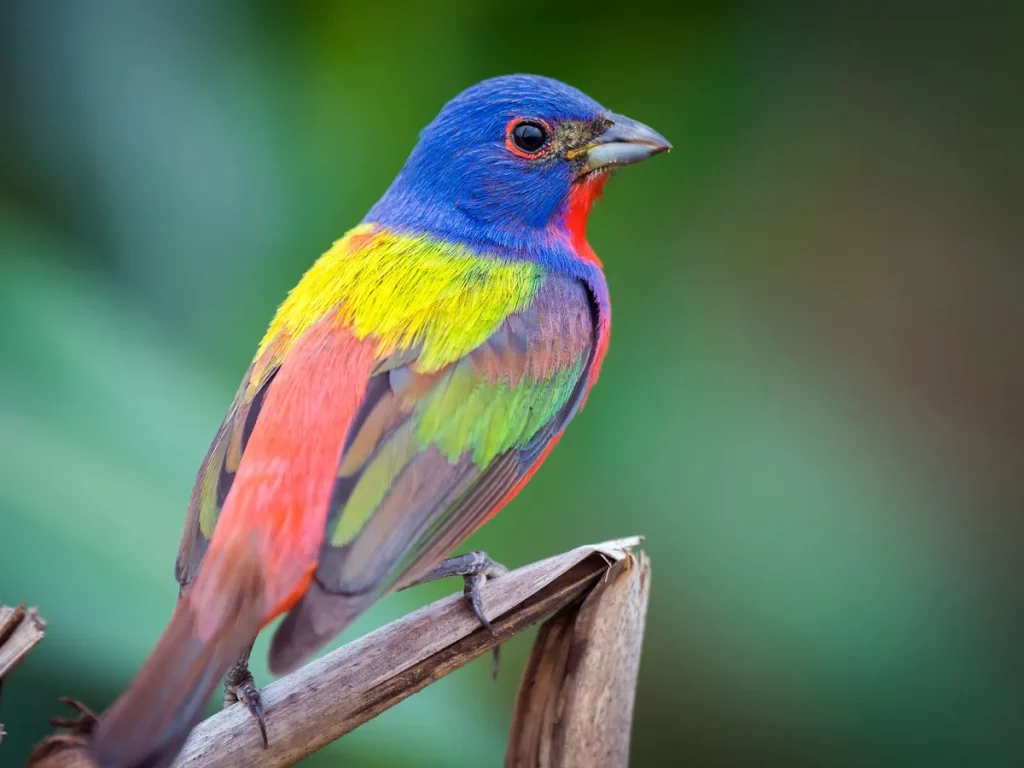
Painted buntings are accidental sightings in Arizona, occurring rarely and irregularly. These strikingly colorful birds have a bright blue head, green back, and red underparts in males, while females have green upperparts and yellow underparts. Painted buntings breed in the southeastern United States and spend their winters in Mexico and Central America. They prefer brushy habitats with dense vegetation.
22. Dickcissel
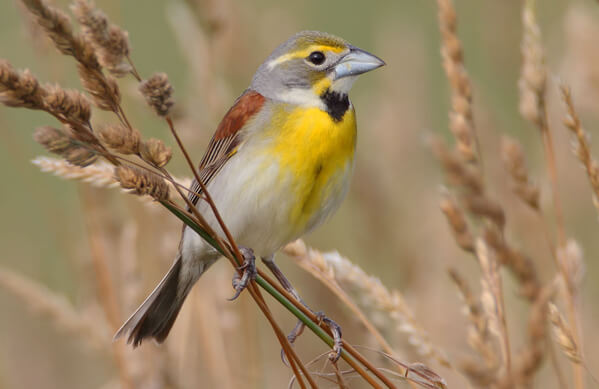
Dickcissels are accidental sightings in Arizona, occurring rarely and irregularly. These medium-sized sparrows have a yellow breast with a distinctive black bib and a brown back. Dickcissels breed in the central United States and the southern prairies of Canada. During migration, they can be seen in various habitats, including fields, grasslands, and prairies.
23. Palm Warbler
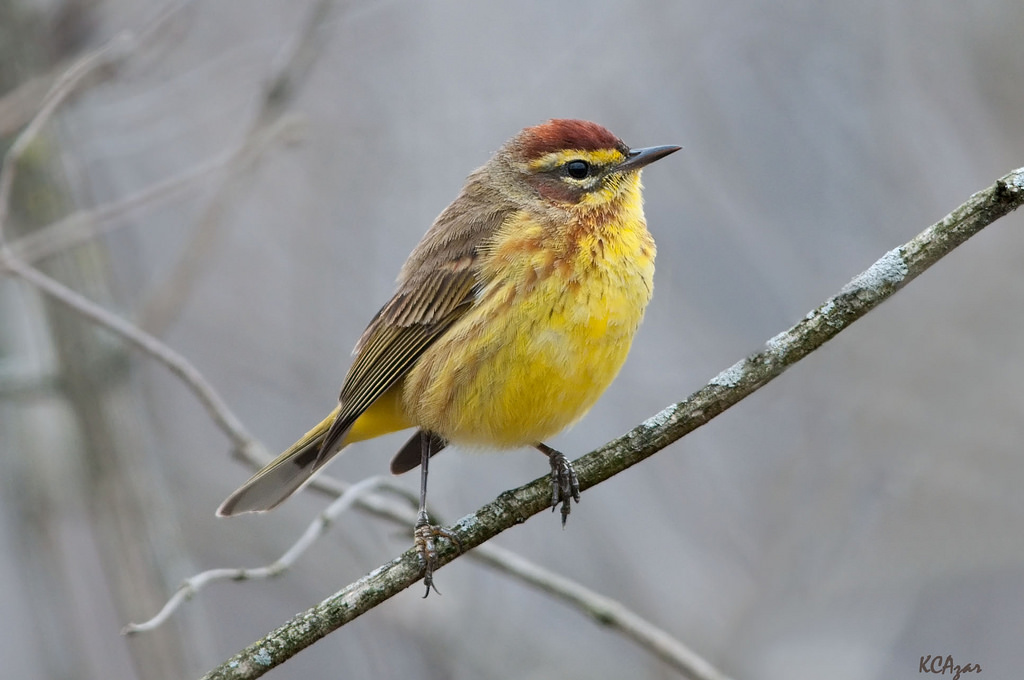
Palm warblers are accidental sightings in Arizona, occurring rarely and irregularly. These small, active warblers have a brown back, yellow underparts, and a rusty cap. Palm warblers breed in the northern forests of Canada and spend their winters in the southern United States, Mexico, and the Caribbean. They can be found in a variety of habitats, including forests, marshes, and open areas.
24. Baltimore Oriole
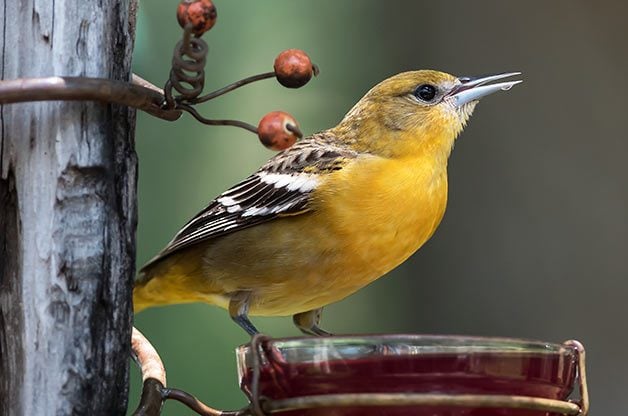
Baltimore orioles are accidental sightings in Arizona, occurring rarely and irregularly. These medium-sized songbirds have bright orange underparts, black wings, and a black head with an orange face. Baltimore orioles breed in the eastern and central United States and spend their winters in Mexico, Central America, and the Caribbean. They are often found in open woodlands, parks, and gardens.
25. Hooded Warbler
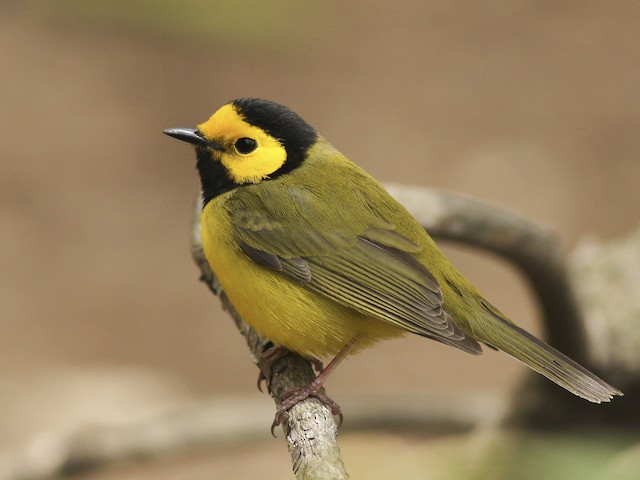
Hooded warblers are accidental sightings in Arizona, occurring rarely and irregularly. These small songbirds have a black hood and bib, a yellow face, and bright yellow underparts. Hooded warblers breed in the eastern United States and spend their winters in Mexico, Central America, and the Caribbean. They prefer moist, dense forests with understory vegetation.
26. Yellow-throated Warbler
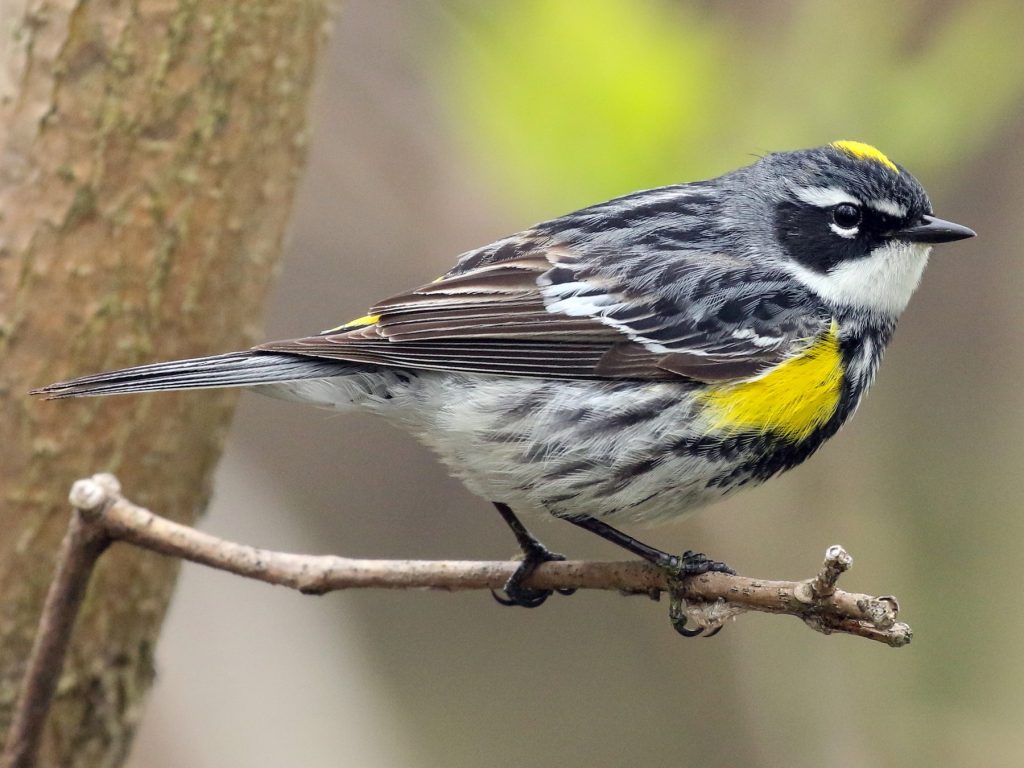
Yellow-throated warblers are accidental sightings in Arizona, occurring rarely and irregularly. These medium-sized warblers have a yellow throat, black and white striped head, and grayish upperparts. Yellow-throated warblers breed in the southeastern United States and spend their winters in Mexico and Central America. They can be found in various wooded habitats, including swamps and bottomland forests.
27. Prothonotary Warbler
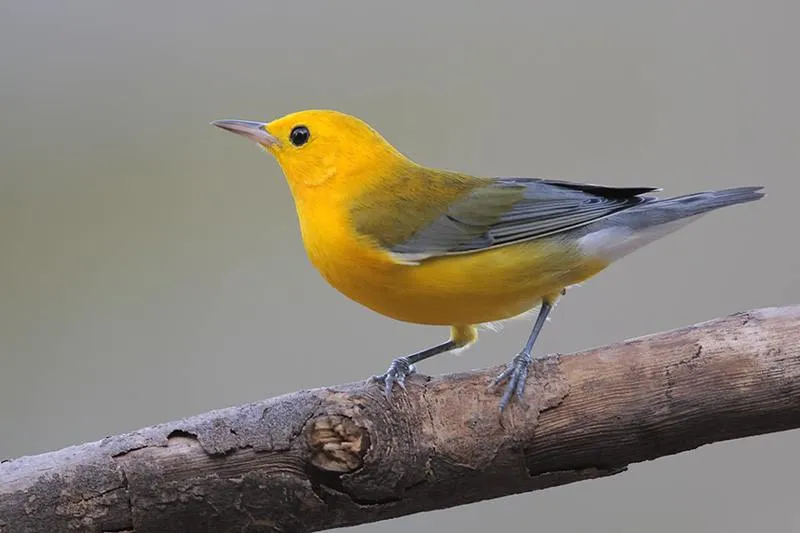
Prothonotary warblers are accidental sightings in Arizona, occurring rarely and irregularly. These small warblers have bright yellow plumage with a blue-gray back. Prothonotary warblers breed in the eastern United States and spend their winters in Central and South America. They are often found in swampy forests and wetlands.
28. Yellow-throated Vireo
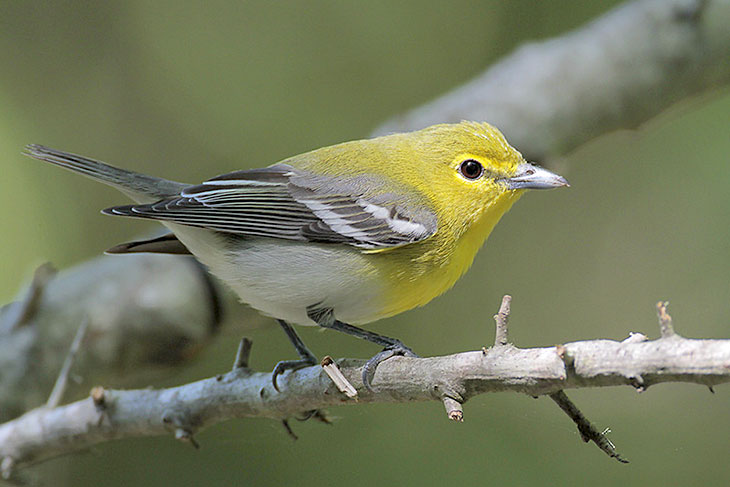
Yellow-throated vireos are accidental sightings in Arizona, occurring rarely and irregularly. These small songbirds have a yellow throat, olive-green upperparts, and white underparts. Yellow-throated vireos breed in the eastern United States and spend their winters in Central and South America. They can be found in various wooded habitats, including deciduous forests and woodlands.
29. Magnolia Warbler
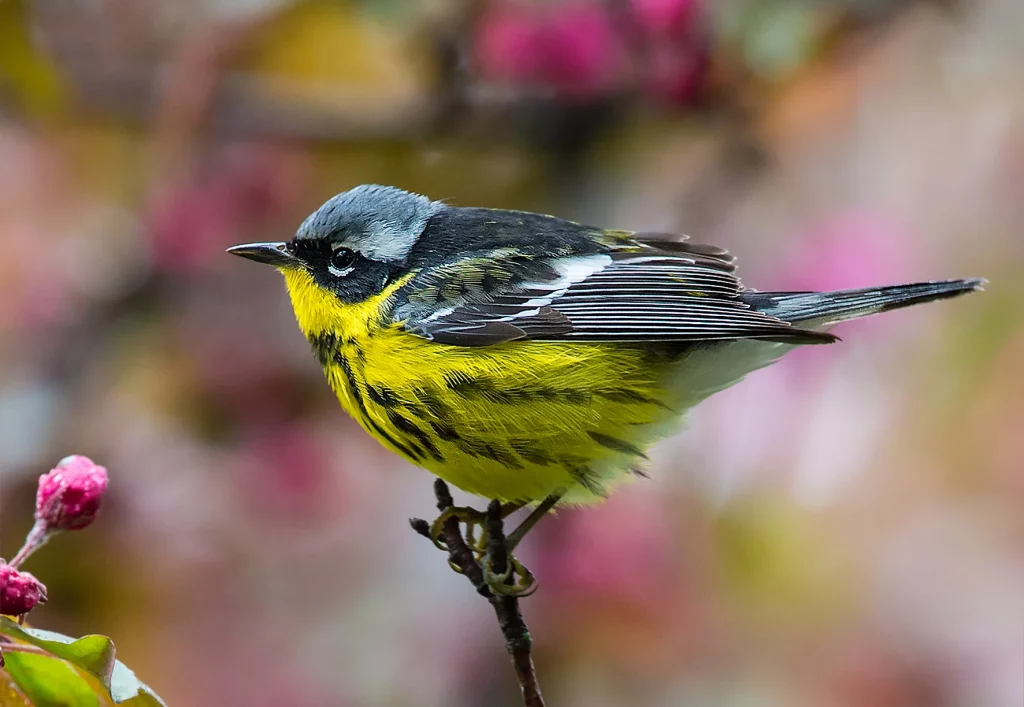
Magnolia warblers are accidental sightings in Arizona, occurring rarely and irregularly. These medium-sized warblers have a black necklace on a yellow throat, black streaks on a white belly, and a yellow rump. Magnolia warblers breed in Canada and the northeastern United States and spend their winters in Central and South America. They prefer coniferous forests and mixed woodlands.
30. Black-throated Green Warbler
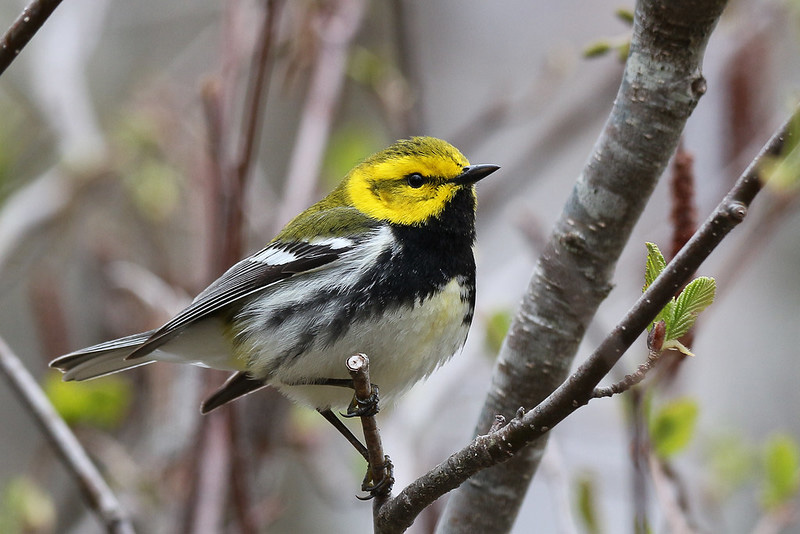
Black-throated green warblers are accidental sightings in Arizona, occurring rarely and irregularly. These small warblers have a black throat and face, yellow underparts, and olive-green upperparts. Black-throated green warblers breed in the northeastern United States and eastern Canada and spend their winters in Mexico, Central America, and the Caribbean. They can be found in various wooded habitats.
31. White-eyed Vireo
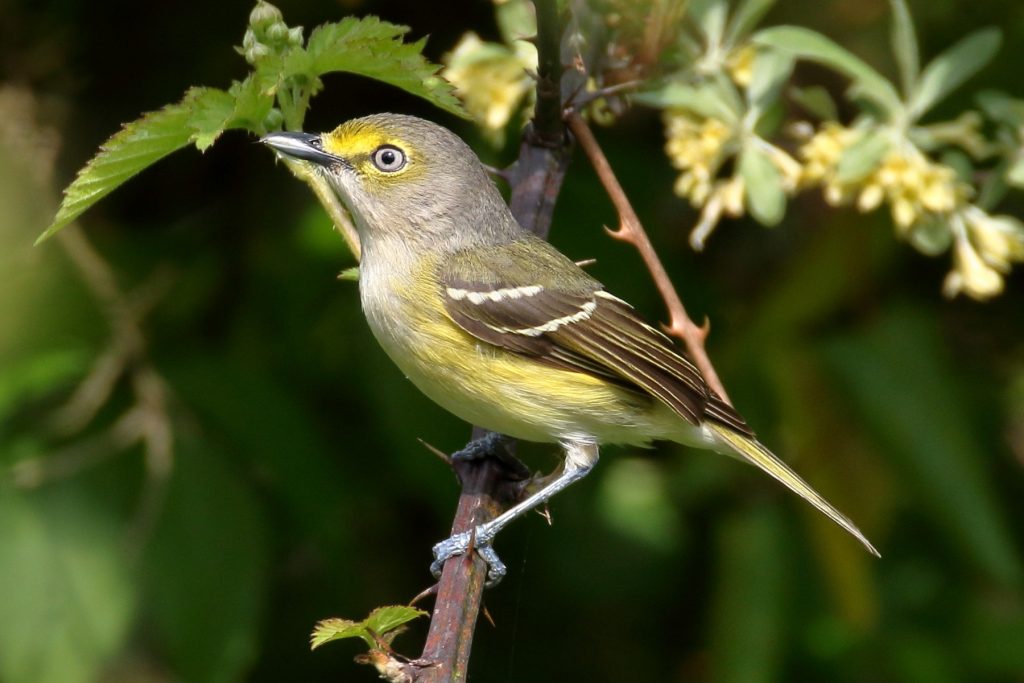
White-eyed vireos are accidental sightings in Arizona, occurring rarely and irregularly. These small songbirds have olive-green upperparts, yellow underparts, and a distinctive white eye-ring. White-eyed vireos breed in the southeastern United States and spend their winters in Mexico, Central America, and the Caribbean. They prefer scrubby habitats with dense vegetation.
32. Pine Warbler

Pine warblers are accidental sightings in Arizona, occurring rarely and irregularly. These medium-sized warblers have olive-green upperparts, yellow underparts, and a distinctive broken white eye-ring. Pine warblers breed in the eastern United States and spend their winters in the southeastern United States and the Caribbean. They can be found in various wooded habitats, including pine forests.
33. Prairie Warbler
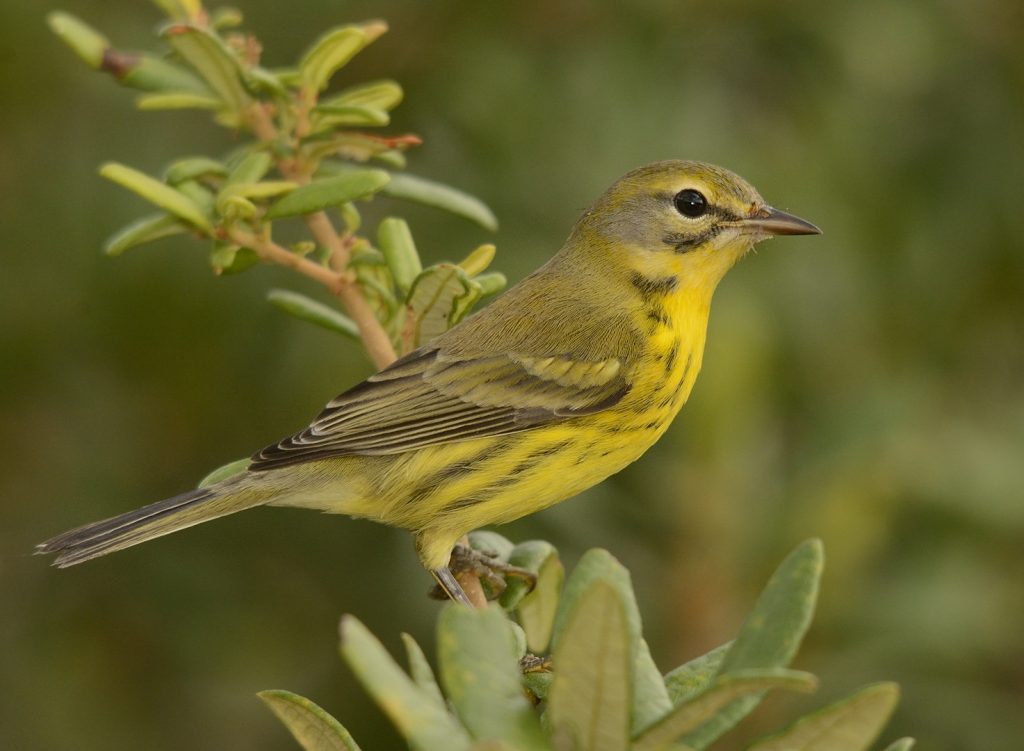
Prairie warblers are accidental sightings in Arizona, occurring rarely and irregularly. These small warblers have olive-green upperparts, bright yellow underparts, and black streaks on their sides. Prairie warblers breed in the eastern United States and spend their winters in Mexico, Central America, and the Caribbean. They prefer open habitats with shrubs and scattered trees.
34. Orchard Oriole
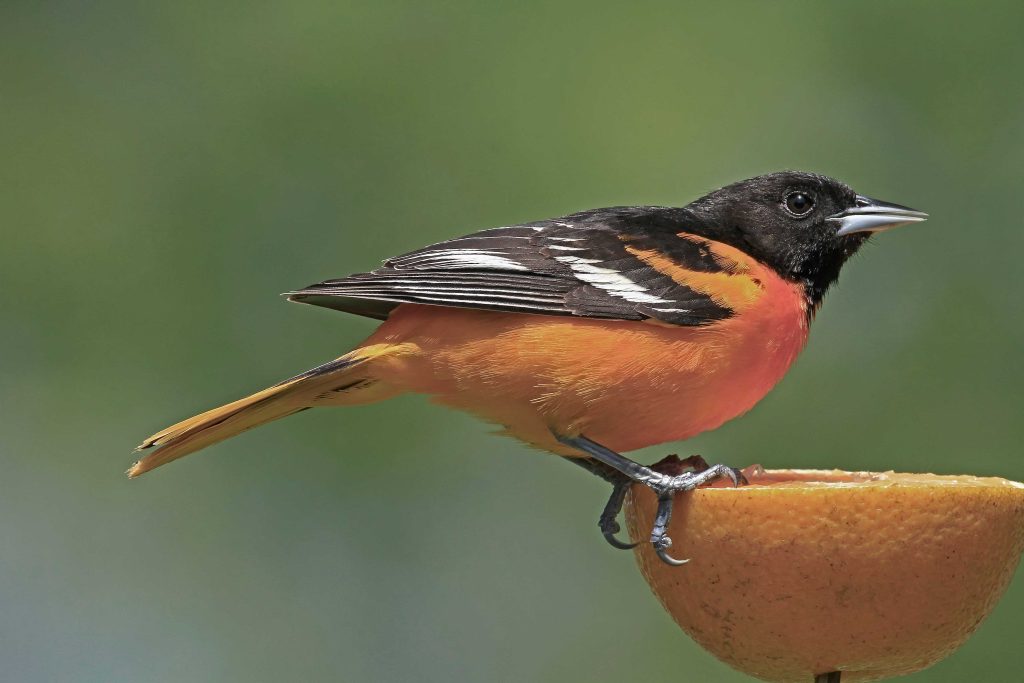
Orchard orioles are accidental sightings in Arizona, occurring rarely and irregularly. These small orioles have a black head, back, and wings, and a chestnut-colored breast. Orchard orioles breed in the eastern and central United States and spend their winters in Mexico, Central America, and the Caribbean. They can be found in open woodlands, orchards, and gardens.
35. Canada Warbler
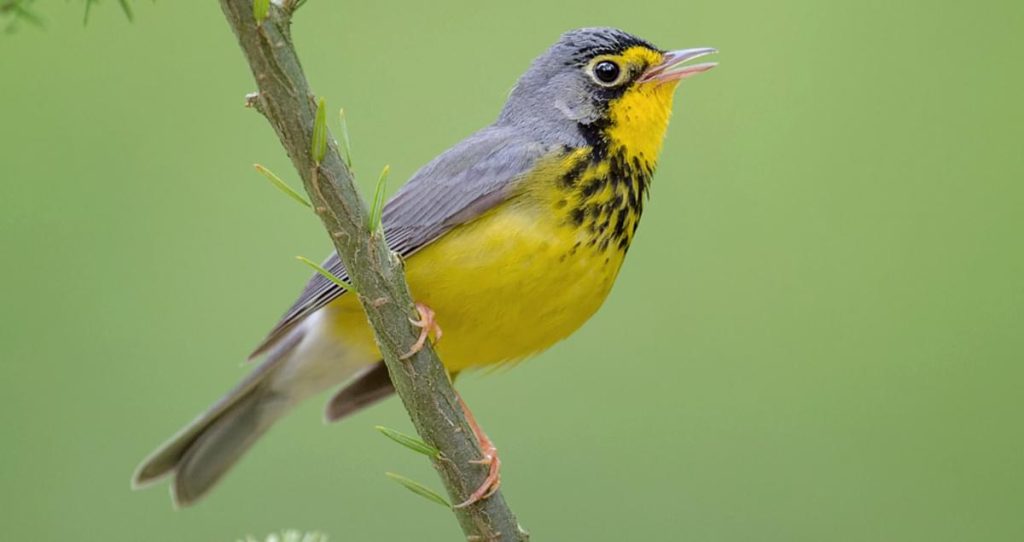
Canada warblers are accidental sightings in Arizona, occurring rarely and irregularly. These small warblers have gray upperparts, yellow underparts, and a distinctive necklace of black streaks on a white breast. Canada warblers breed in Canada and the northeastern United States and spend their winters in South America. They prefer moist, dense forests with understory vegetation.
36. Couch’s Kingbird
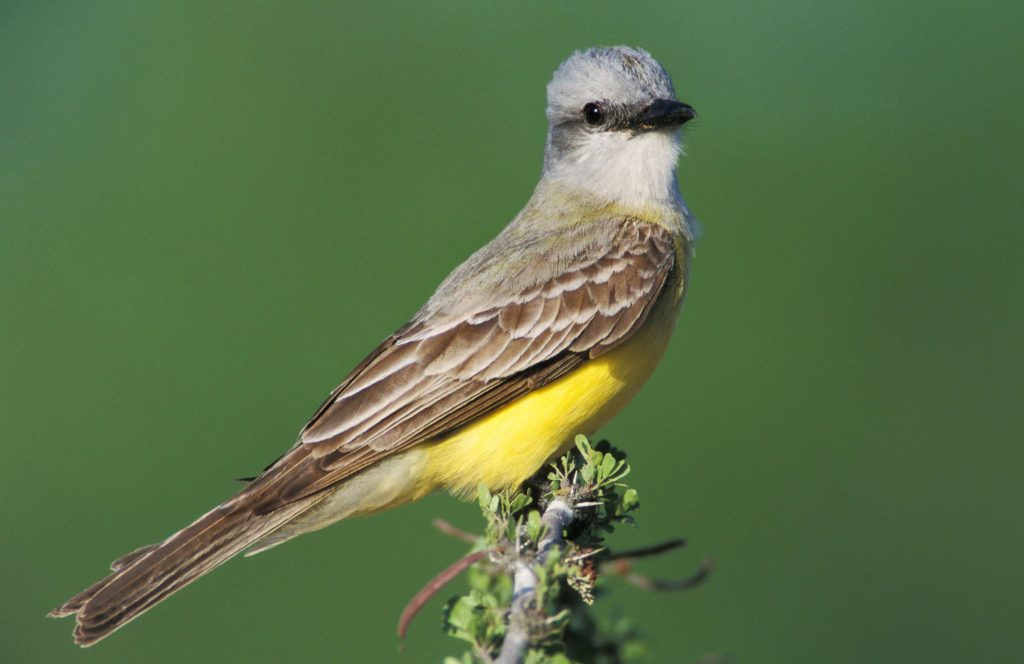
Couch’s kingbirds are accidental sightings in Arizona, occurring rarely and irregularly. These large flycatchers have a yellow belly, grayish upperparts, and a black tail with white outer feathers. Couch’s kingbirds breed in Mexico and Central America and migrate to the southwestern United States for the summer. They are often found in open habitats, including fields, riparian areas, and desert scrub.
37. Scarlet Tanager

Scarlet tanagers are accidental sightings in Arizona, occurring rarely and irregularly. These medium-sized songbirds have bright red plumage in males and olive-green upperparts with yellow underparts in females. Scarlet tanagers breed in the eastern United States and spend their winters in South America. They can be found in various wooded habitats, including deciduous forests.
38. Cape May Warbler

Cape May warblers are accidental sightings in Arizona, occurring rarely and irregularly. These small warblers have olive-green upperparts, yellow underparts, and distinctive chestnut cheek patches. Cape May warblers breed in the boreal forests of Canada and spend their winters in the Caribbean and northern South America. They prefer coniferous forests and shrubby habitats.
39. Blue-winged Warbler
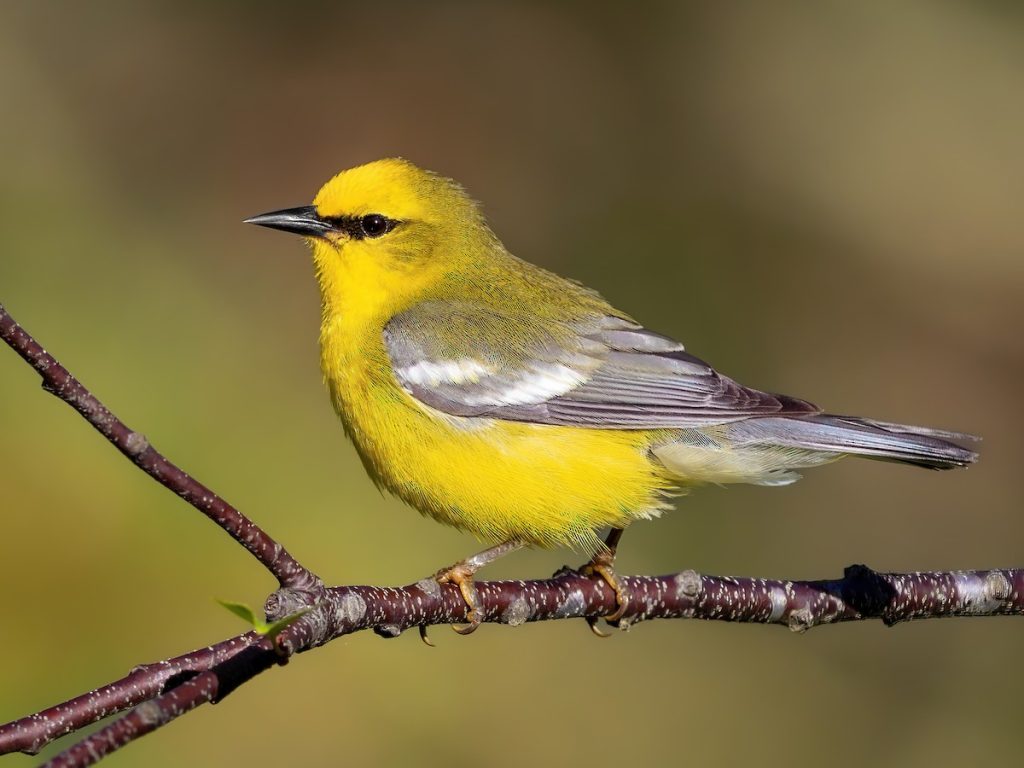
Blue-winged warblers are accidental sightings in Arizona, occurring rarely and irregularly. These small warblers have bright yellow underparts, blue-gray wings, and a distinctive white wing patch. Blue-winged warblers breed in the eastern United States and spend their winters in Central and northern South America. They can be found in various habitats, including forests, wetlands, and shrubby areas.
These 39 yellow bird species represent the remarkable diversity of avian life that can be encountered in Arizona, showcasing the beauty and splendor of nature.